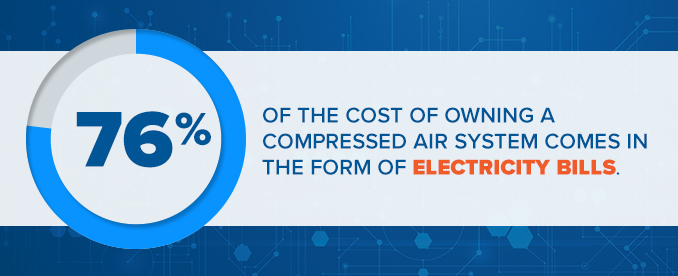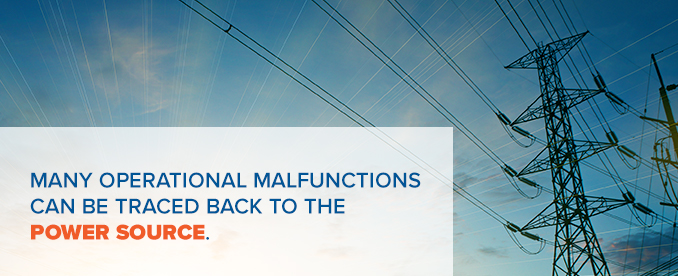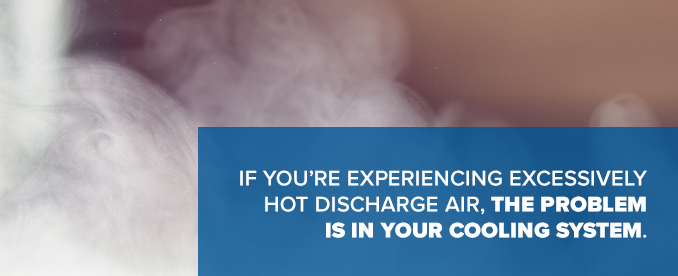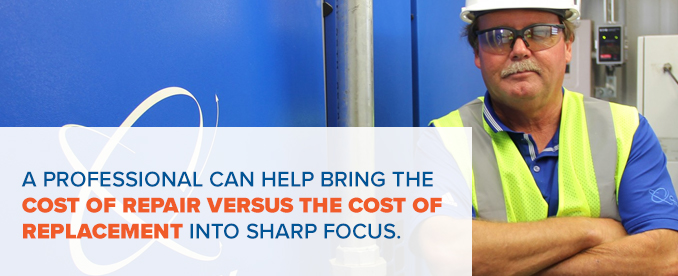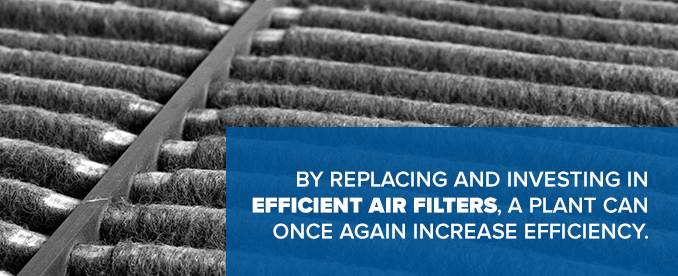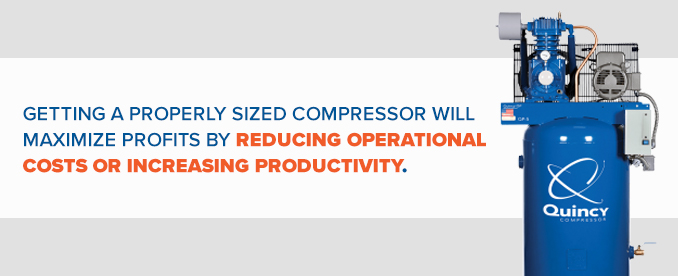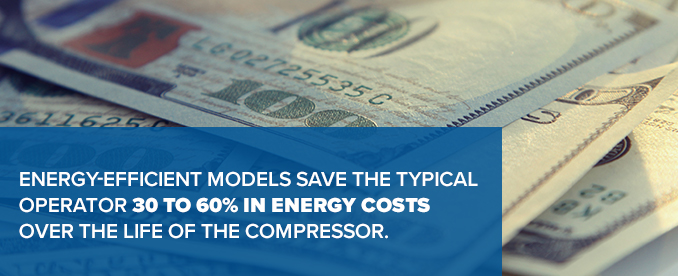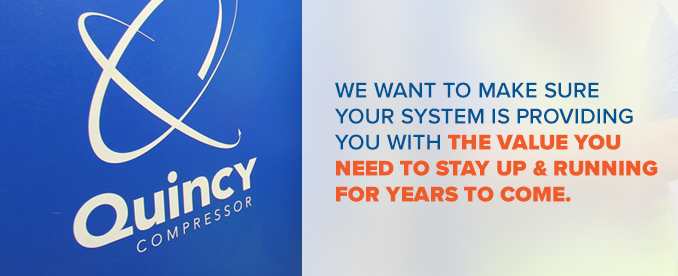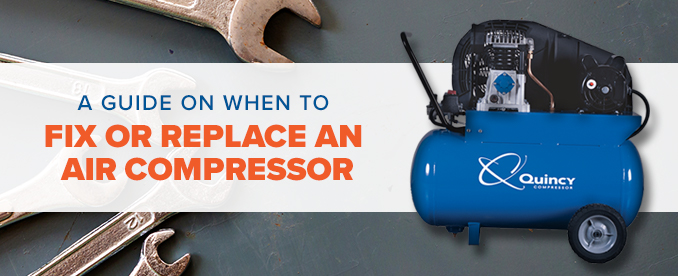
Compressed air systems form the backbone of industrial manufacturing, are an essential component of medical facilities and are even responsible for keeping commercial food services running. Needless to say, many of the things that Americans have come to take for granted are only possible with the assistance of compressed air.
Compressed air systems provide consistent, responsive power to end-use applications. This power is essential for production plant operations who are looking to keep their employees productive while ensuring that they can complete operations safely and efficiently.
However, while many companies throughout countless industries are dependent on compressed air, the fear of replacement costs drive many companies to invest instead on repairs that may prove costlier in the long run.
We are industry leaders in the sale of new compressed air systems. Simultaneously, we have spent years earning a sterling reputation for expert compressed air maintenance. Because we are intimately familiar with both the repair and replacement of compressed air systems, we know that, depending on the situation, one or the other may be best for you and your company.
So we want to help you make that choice. With so many variables at play within these complex systems, assessing compressed air problems can be a confusing process. But we know that, with a little forethought and a good team of compressed air experts on your side, you can make the best decision for you and your business. Because, in the end, we’re in the compressed air business because we want to see industry doing the best work possible.
With that in mind, here’s our guide on when to either fix or replace an air compressor system.
View Our Products Learn More Find a Dealer Near You
The Economics of Owning a Compressed Air System
In many ways, the question of whether to replace or repair a compressed air system can be expressed as a mathematical problem. In other words, at which point does the money saved from a new system offset the cost of its purchase?
Luckily, many people have crunched the numbers on this question and have provided a nice basic framework for deciding which approach makes the most sense for your business.
According to PneumaticTips, it’s important to remember that, if you consider the overall cost of ownership of a compressed air system, assuming a ten-year life for the system, the purchase cost only accounts for about 12% of the total. Furthermore, 76% of the cost of owning a compressed air system comes in the form of electricity bills.
To put this in perspective, if you continuously run a 100-hp compressor at full power, you will spend $74,000 a year in energy costs, assuming a rate of 10 cents per kWh.
Therefore, if you are assessing the value of your compressed air system and making your decision in purely economic terms, you need to keep the total cost of ownership in the forefront of your mind. While the cost of repairs may be significantly less than the cost of replacing your system, ask yourself if you’re keeping a system working that’s actually costing you more in the long run by operating less efficiently.
These costs come in many different forms. First, as compressors age, the costs of repairs increase. That’s why you should carefully consider any repair that costs over 50% of the cost of a comparable replacement. But you also need to consider the operational inefficiencies and the subsequent costs of an older compressor. Because of how inefficient some older models are, you may be wasting as much money on energy costs as you would spend on a new compressor.
Start With Troubleshooting
While there are many good reasons to forego a costly repair and instead opt for replacement, it’s important to begin with basic troubleshooting. In-house technicians can accomplish a lot and, in turn, help you avoid the cost of both options. Furthermore, by getting a firm grasp on the issues within your compressed air system, you can get a better sense of what either repair or replacement might cost you moving forward.
Therefore, let’s review some of the common issues affecting compressed air systems.
Many operational malfunctions can be traced back to the power source. Are there issues with the point of connection between your compressor and the electric grid? Additionally, improper lubricant levels can contribute to poor operation. When was the last time you checked and adjusted the oil levels in your system?
If you are experiencing excessive noise or knocking while the compressor is running, loose bearings, flywheels, belts or defective crankcases are also possible culprits. If you can isolate the source of the noise, you can either make the small adjustments necessary or at least guide a repair technician in the right directions, potentially saving you money on otherwise costly repairs.
Milky oil, oil in discharge air or excessive oil consumption can all be caused by a number of issues, although the most common are worn piston rings, poor or restricted air ventilation and loose bolts within the oil system. All of these issues can be corrected through minor adjustments or the replacement of small components. More serious issues of this kind might require larger component replacements and could warrant considering a total system replacement.
In the case of insufficient end-use pressure, it’s important to remember that issues can occur throughout the entirety of the system, and not just within the compressor itself. End-use issues are often caused by leaks or poor maintenance of piping. An inspection of the piping itself should reveal any leaks. If poor end-use pressure is being caused by poor air quality or rust build-up within metal-type piping, you may need to invest in air pipe replacement followed by an increased commitment to air quality control.
If you’re experiencing excessively hot discharge air, the problem is in your cooling system. Depending on how robust your cooling system is, you may need to either make repairs or invest in increased cooling.
Excessive belt wear has a number of causes, including the belt being too tight or too loose or being out of alignment. If you’re capable of making these adjustments yourself, you can save on repairs, but keep in mind that these sorts of problems are easily caused by improper adjustments. If your own maintenance staff members aren’t able to make these types of exacting adjustments, you will save money in the long run by bringing in an outside repair technician.
Finally, make sure that the fuses responsible for bearing the electrical load of your compressor are properly sized. A compressor should not regularly blow fuses. If you are repeatedly doing so, and you aren’t sure how to get properly sized fuses in place, keep in mind that you’re hurting both energy and worker efficiency by constantly blowing your fuses.
In the long run, reduced operating costs will offset the cost of bringing in an electrician to make the proper adjustments. However, don’t confuse blown fuses with the tripping of the compressor’s reset mechanism. If your compressor is repeatedly resetting, this may be a symptom of a serious motor malfunction and should be addressed by a technician immediately in order to avoid irreparable damage to your compressor motor.
When Troubleshooting Fails, Opt for Professional Analysis
However, just as it’s important to make sure you’ve done all you can to avoid costly repairs, it’s equally important to know when to consult a professional technician who specializes in the repairs of compressors daily.
Having a professional assessment should be seen as a data collection venture designed to help you come to the best and most cost-effective decision for your compressed air system moving forward. A professional can help bring the cost of repair versus the cost of replacement into sharp focus.
However, this is also a great step if you’re generally unsure of the overall condition of your compressor and you want to be prepared should something fail in the future. Professional analysis will help you understand where your compressor is under-performing, where it still has many years of life left and where components are in dire need of replacement.
Many operators opt for this kind of analysis when they know that their system is entering the twilight of its life. While the compressor may be working well, a compressor may be old enough that any major malfunction in the future wouldn’t be cost-effective to fix. Additionally, the cost of being without a compressor is a huge expense in terms of downtime for businesses that rely on air for production. Simply estimating the amount potentially lost in production is enough to keep systems operating efficiently and with state of the art equipment.
Either way, professional analysis is a great way to fully understand the cost and value of all of your options moving forward.
Energy Efficiency Through End-Use Adjustments and Component Replacement
There are also halfway measures that fall between typical repairs and full compressor replacement that businesses should consider.
Initially, many companies are not vigilant in monitoring the ways end-use equipment is affecting energy efficiency. Over pressurizing end-use applications wastes energy in the long run. A minor adjustment in this regard will save money while also reducing the demand on the compressor.
Additionally, if end-use tools are worn out, replacing them individually can also reduce energy consumption. In the same vein, older end-use tools were not designed with energy efficiency in mind. Consider replacing them with newer, more efficient designs.
Finally, look into the tools that require the highest pressure. If the pressure requirements of these tools can be reduced, either by adjusting their use or replacing them with more efficient models, you can lower the overall pressure of your air system, once again increasing efficiency.
There are other components that can be installed that are not end-use but nonetheless save money in the long run by reducing energy consumption. For example, installing better piping can reduce inefficiencies in delivering pressure to end-use applications. Efficient air dryers not only increase the functionality of end-use tools by reducing moisture, but they also reduce wear on piping, again increasing efficiency while reducing operational and future repair costs. Lastly, by replacing and investing in efficient air filters, a plant can once again increase efficiency while reducing wear on the entire compressed air system.
In the end, by replacing certain components, companies can have the best of both options: extending the life and efficiency of their compressor, while investing in cost-saving components that will add value to the compressed air system moving forward.
Opportunities for Long-term Savings in a New Compressor
However, as compressor technology advances and compressor operators search for more opportunities to cut costs, it’s important to understand the various ways in which a new compressor is actually less expensive than continuing to operate an older, less efficient model.
Here are a couple of ways that buying and installing a new compressor can actually save you money.
Sizing your compressor properly:
When energy costs were lower, many companies installed air compressors with “room to grow,” meaning they were comfortable with having an oversized compressor for their operation. Because energy costs weren’t the concern that they are now, it seemed like a good idea to have a compressor capable of carrying a much heavier load in case the operation grew in the near future.
Unfortunately, an oversized compressor uses far more electricity than it needs to, and as such, costs a company more in the present than it might save that same company in the future.
Furthermore, some companies, as they were starting their operations, simply didn’t yet know exactly what their compressed air needs were going to be moving forward. In this case, they simply bought too much compressor than they required.
Conversely, some industries don’t have enough compression for what they’re currently envisioning for their company. In this case, their compressor is hindering growth and, in turn, future profits.
In both cases, getting a properly sized compressor will enable the company to maximize profits by either reducing operational costs or increasing productivity.
This is where professional assessment is so useful. An analysis will be able to accurately determine whether your compressor is operating at peak efficiency or if much of its power is being wasted. Furthermore, they will be able to connect their analysis with the best replacement options available, helping you clearly see where you have opportunities to save money simply by having a properly sized compressor.
Taking advantage of energy-efficient design:
Furthermore, as energy costs have risen, compressor manufacturers have responded by investing in energy-efficient designs.
In the long run, opting for one of these state-of-the-art, energy-efficient models can save you significant amounts of money. In fact, according Mass Save, energy-efficient models save the typical operator 30 to 60% in energy costs over the life of the compressor.
One way that compressor designers have found ways to squeeze increased efficiency out of air compressors is by creating models that operate at variable speeds. In other models, compressors typically operate in modulation mode. While this is an efficient approach to pressure delivery to end-use tools, it’s very inefficient when it comes to energy consumption. Even if a compressor in modulation mode is only delivering 20% of its pressure capacity to end-use applications, it’s still consuming 70% of its maximum load power.
Luckily, compressor manufacturers have addressed this problem by introducing new, more efficiently operating modes. The first is often referred to as load/unload mode. This mode uses stored air to maintain air pressure while the main compressor blows excess pressure. This unloading period drastically reduces power consumption, to somewhere between 10 to 25% of the power consumed during the load period. However, these systems are only as efficient as the system storage capacity. The longer a compressor system can operate in unload mode, the lower the power consumption. If the system must return to load mode too quickly in order to meet end-use demands, energy savings will be minimal.
Variable Speed Control compressors have a more direct relationship between end-use pressure requirements and power consumption. Because these systems are capable of only producing and delivering the exact amount of pressure required throughout the system at any given time, they are great for operations that do not need maximum pressure for the majority of the time. However, they are less efficient than traditional compressors when at full-capacity, so they aren’t always the best option for systems that tend to operate at maximum for most of the day.
Variable Displacement Control compressors adjust the maximum capacity of the compressor according to end-use requirements. If you use 50% of your compressor’s maximum capacity for the majority of the day, this type of control effectively reduces the size of the compressor during that time accordingly. However, just like those with Variable Speed Control, these systems are less efficient at maximum capacity, and thus should only be considered if your operation includes a lot of variation in end-use pressure requirements.
Depending on the size of your compressor, some older models can be retrofitted to include these new controls — Variable Speed Controls retrofits are especially common. However, these can be costly and thus should only be considered for large compressors that would be especially expensive to replace. For smaller operations, a complete air compressor replacement is generally the most cost-effective option.
Counting on Quincy Compressor for Air Compressor Replacements or Repairs
Regardless of whether repair or replacement is your best option, Quincy Compressor is the industry leader best suited to help you maximize the value of your compressed air system.
If you’re looking to repair an existing compressor system, local dealers and Quincy-certified professionals are prepared to bring your current system back into peak operational efficiency. Because our compressors are unrivaled in terms of their durability and longevity, most issues can be addressed through routine maintenance and occasional repair and component replacement.
If you are looking to start exploring your options moving forward, you can also count on Quincy to provide you the kind of expert, sound and unbiased analysis that will help you make the best decision for your company moving forward. Our patented and award-winning Energy Quotient analysis has helped countless industries uncover their own inefficiencies while providing them with the tools they need to improve energy efficiency and thus cut energy costs.
Finally, we continue to be the leading provider of the highest-quality, among the most technologically innovative and most energy-efficient compressors available on the market. Regardless of your industry or intended application, we have a compressor that’s perfectly suited for your needs and the size of your operation. So, if you’re ready to take steps towards replacing your compressor, make sure you replace it with one that will last — not just because it’s durable, but also because it features a cutting-edge design that keeps the future in mind by implementing the latest in energy-efficient and operational technologies.
Whether you’re looking to buy or to get your current compressor serviced, use our helpful Sales and Service Locator to find the nearest dealer or service professional. While we know that much of the information you seek is just one internet search away, we believe that, when it comes to a machine as powerful and complex as an air compressor, sometimes it’s helpful to have a face-to-face discussion with a professional who’s fully versed in compressed air operations.
Furthermore, by contacting a local representative directly, you can get the replacement parts you need quickly. And when it comes to running a plant, we know that getting your tools and employees back to work is of the utmost importance.
So, as you work to increase productivity and worker efficiency while simultaneously lowering energy and maintenance costs, we look forward to partnering with you. We believe in the power of compressed air, and we want to make sure your system is providing you with the value you need to stay up and running for years to come. Contact us today, as we look forward to hearing from you and doing what we can to keep your air compressor working at peak efficiency!


